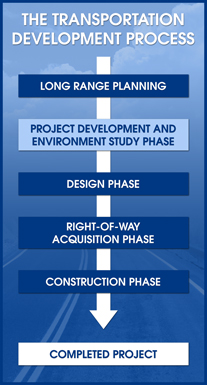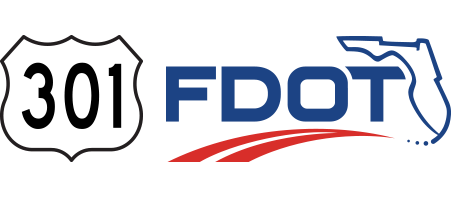A Project Development and Environment (PD&E) Study is a comprehensive study that evaluates social, economic and environmental effects associated with the proposed transportation improvements so that the FDOT can reach a decision on the type, location and conceptual design to meet the project’s proposed purpose and need. During the PD&E study process, feasible alternatives are developed for roadway improvement projects. These “Build” alternatives are evaluated based on environmental, engineering and socioeconomic conditions, safety needs and public input. A No-Build Alternative, which considers leaving US 301 in its present state while only undertaking routine maintenance on it, remains a viable alternative throughout the study. The need for additional right-of-way for stormwater management facilties, floodplain compensation sites and environmental mitigation is also evaluated during the PD&E study phase.
No federal funding is proposed for this project. A PD&E Study is required even if federal funds are not used. The Study would need to meet state requirements which are similar to federal requirements in analyzing the effects of the proposed improvements. The state equivalent document is called a State Environmental Impact Report (SEIR) or a Non-Major State Action (NMSA) and the document is signed by the FDOT District Secretary/ Delegated Authority or designee. The FDOT Office of Environmental Management would not be involved in this process.
The US 301 project is in the PD&E study phase of the FDOT’s 5-step highway development process. If the study results in a Build Alternative selection, the project may proceed to the next phase, which is the Design Phase.
Five Steps in the Transportation Development Process

- Long Range Planning: The FDOT and local governments conduct long-range transportation planning on an ongoing basis to identify and prioritize individual projects.
- Project Development and Environment Study (PD&E): During this step, design concept options and their social and environmental effects are examined.
- Design: During design, detailed construction plans are prepared.
- Right-Of-Way Acquisition: This phase entails acquisition of any necessary right-of-way, based on the design plans.
- Construction: The roadway is built during this phase.
